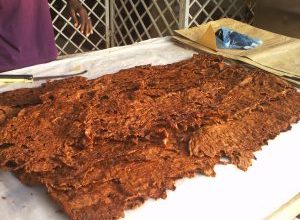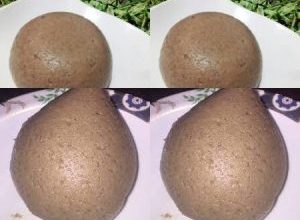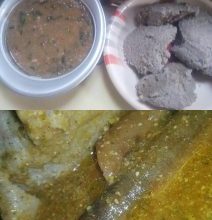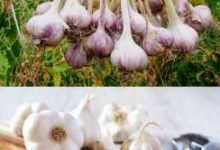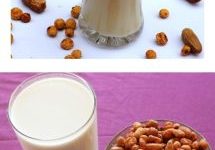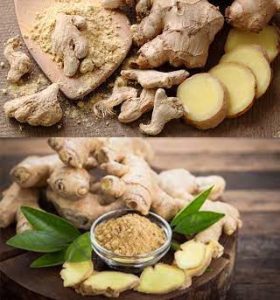
Things You Need To Know About Ginger
Since ancient times, ginger (Zingiber officinale Roscoe), a bulbous plant, has been grown. Ginger is thought to have its origins in southern China, Southeast Asia, and India. In the first century, it was brought to the Mediterranean, in the third century to Japan, in the fourth century to England, and in the eleventh century to England and America.
Today, it is widely grown throughout the world’s tropical and subtropical climates, mostly in Asia and Africa. More than 21,000 hac are used to harvest ginger globally, with a total annual production of more than 200,000 tons and an average yield of 10,000 kg per hac.
Ginger is primarily used in food as a spice and flavoring. Volatile oils, primarily zingerone, shogaols, and gingerols as the most pungent ingredients, are what give ginger its distinctive aroma and flavor. Numerous investigations have been conducted to uncover this plant’s miracle.
The history of ginger cultivation, its medicinal properties, current cultivation and production, varieties, and breeding, Usage will all be covered in this article.
Ginger History and Farming
The herbaceous perennial plant ginger, a member of the Zingiberaceae family, is thought to have originated in Southeast Asia. Its aromatic, pungent rhizome is used as a spice, flavoring, food additive, and medicinal. The Sanskrit term for the spice, Singapore, is where the generic name Zingiber, which means “zingiber,” originates from.
Since ancient times, ginger has been used in India, Africa, and China, and by the first century, traders had brought ginger to the Mediterranean area. It was well-known in England by the eleventh century. Soon after the conquest, the Spaniards introduced it to Mexico and the West Indies, and by 1547, Santiago, Chile, was exporting ginger to Spain.
Over 50 genera and more than 1,300 species make up the Zingiberaceae family, which is found in tropical Asia, Africa, and the Americas. Family members have distichous leaves with overlapping basal sheaths that create a pseudostem. The plants are either epiphytic or self-supporting. Flowers in determinate cymose inflorescences are hermaphrodite, typically markedly zygomorphic, and subtended by prominent, spirally arranged bracts.
A tubular fused calyx, a tubular corolla with one lobe bigger than the other two, and two whorls make up the perianth. Normally, flowers only have one fertile stamen and two stamenoids (sterile stamens) joined together to form a petaloid lip. The stigma is formed like a funnel, and the ovary is inferior with two nectaries on top.
Ginger has been growing for a very long time. It is most likely a native of South Asia and possibly China, but it is today grown in many tropical and semi-tropical regions, including India, Australia, Japan, West Africa, and the Caribbean (LMDBL 2002).
According to Herbst (2001), Jamaica produces the majority of the ginger consumed in the United States, with India, Africa, and China following. China led the world in ginger production in 2005, according to the Food and Agriculture Organization of the United Nations, with a global share of approximately 25%. China was followed in production by India, Nepal, and Indonesia.
Benefit of Ginger
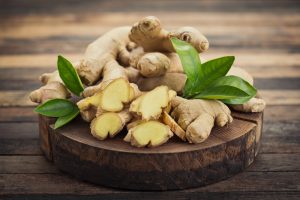
1. Ginger has a lengthy history of use in both conventional and complementary therapies. A few of its uses include helping with digestion, easing motion sickness, and fighting the flu and common cold. The natural oils in ginger, of which gingerol is the most significant, are what give it its distinct aroma and flavor.
The primary bioactive ingredient in ginger is gingerol. Many of ginger’s therapeutic qualities are due to it.
Research has shown that gingerol possesses potent anti-inflammatory and antioxidant propertiesTrusted Source. For instance, it might aid in lowering oxidative stress, which is brought on by the body having too many free radicals.
2. Ginger may be helpful in treating nausea, including nausea from pregnancy, sometimes known as morning sickness. Ginger may help people experiencing some types of surgery feel less sick and less likely to vomit, and it may also lessen nausea brought on by chemotherapy.
Even though it’s generally safe, it’s best to consult a doctor if you’re expecting before taking big doses.
Ginger might not be appropriate. For pregnant women who are about to go into labor and those with a history of miscarriage or vaginal bleeding, turn to a trusted source. It might not be appropriate for people who have clotting issues.
3. Studies on humans and animals suggest that ginger may aid with weight loss.
According to a 2019 review, using ginger supplements significantly decreased body weight, the waist-hip ratio, and the hip ratio in overweight or obese persons.
Ginger may have a positive impact on weight loss in a number of ways, including its capability to lower inflammation.
5. According to certain studies, ginger may have anti-diabetic benefits.
41 persons with type 2 diabetes took 2 grams of ginger powder daily as part of a study from 2015.
2022 evaluation According to consuming ginger pills significantly lowered type 2 diabetics’ fasting blood sugar and HbA1c levels.
The study examined the outcomes of 10 trials in which individuals consumed 1,200–3,000 milligrams (mg) daily for eight to thirteen weeks.
6. By accelerating the movement of food through the stomach, ginger may help treat indigestion.
Functional dyspepsia is indigestion that occurs for unknown reasons and manifests as nausea, belching, abdominal pain, bloating, and a feeling of being overstuffed. With irritable bowel syndrome (IBS), it frequently happens.
In one trial, researchers discovered that, compared to taking a placebo, having a ginger and artichoke mixture before a large meal dramatically reduced the symptoms of indigestion in persons with functional dyspepsia.
7. Menstrual pain, or dysmenorrhea, may be relieved with ginger. According to some studies, ginger may be more helpful in reducing menstruation pain than acetaminophen, caffeine, and ibuprofen (Novafen).
However, more research is required.
8. A higher risk of heart disease is associated with high levels of LDL (bad) cholesterol, according to a reliable source.
Researchers discovered that consuming ginger significantly decreased triglycerides and LDL cholesterol while boosting HDL cholesterol in a 2022 evaluation of 26 trials (Trusted Source). Even daily dosages lower than 1,500 mg were efficient.
It could be challenging to incorporate such large dosages of ginger into your diet, especially if you don’t enjoy the flavor of ginger.
9. Due to gingerol and other antioxidant and anti-inflammatory components, ginger may have anticancer benefits.
According to some research, these substances may help lower the risk of gastrointestinal malignancies such as colorectal, pancreatic, and liver cancer.
20 participants in one research with a high risk of colon cancer consumed 2 g of ginger every day for 28 days. The participant’s intestinal lining exhibited fewer cancer-like alterations than was predicted at the conclusion of the trial.
The majority of research on ginger and cancer risk, however, has not included human subjects.
10. According to some research, the ginger chemicals 6-shogaol and 6-gingerol may aid in the prevention of degenerative conditions like Alzheimer’s, Parkinson’s disease, and multiple sclerosis.
Alzheimer’s disease and age-related cognitive loss may be significantly influenced by oxidative stress and chronic inflammation.
certain research on animalsAccording to a reliable source, ginger’s bioactive components and antioxidants can reduce brain inflammation. This might delay cognitive aging.
11. Ginger may be helpful in treating bacterial and fungal infections due to its antibacterial qualities.
Staphylococcus aureus (S. aureus), Escherichia coli (E. coli), and Candida albicans (C. albicans), which cause fungal infections in the mouth, vagina, and other places, have all been proven to be susceptible to it, according to laboratory tests.
Side Effects Of Ginger
Ginger is generally safe to consume in small amounts. More than 5 grams of ginger per day in high quantities increases the likelihood of negative effects. Skin contact with ginger may result in a rash.
Consuming it could result in:
Heartburn and Gas,
Mouth irritation burping, and general stomach discomfort.
Experts say that ginger accelerates the passage of food and stool through the intestines and causes unrest, which frequently results in restlessness and weakness as well. This is why, if consumed in large quantities, ginger can cause diarrhea.
Blood loss could be made more likely by ginger. It might not be secure if you suffer from a bleeding issue. Inform your physician of all herbal medications you use, including ginger, at all times.
According to gynecologists, consuming ginger beyond the prescribed limit of 1500 mg per day may increase the risk of miscarriage. To be on the safer side, it is suggested to avoid too much ginger during pregnancy or consume it only after consulting a doctor.
How to make Ginger Tea
The numerous health benefits of ginger tea are combined with the ease of preparation for a delicious, all-natural way to support good health. Whether you’re feeling under the weather or just in the mood for something warm to drink, a cup of ginger tea will allow you to relax, take a deep breath, sip slowly, and enjoy.
Ingredients
4–6 thin pieces of raw, peeled ginger (add more slices for a stronger ginger tea)
Two cups (473 mL) water
Juice from one-half of a lime
Honey or Sugar
Steps In Making Ginger Tea
The embedded video is a detailed explanation of how to make perfect Ginger Tea, watch the full video;
Wash and clean the ginger root first. Next, peel and thinly slice the ginger.
Tip two cups of water into a medium pot.
After submerging the ginger slices in water, let them simmer for ten to twenty minutes. For spicy tea, simmer it longer.
Take off the heat. If desired, add honey and lime or lemon juice to taste.
Pour into your preferred mug.
Ginger Tea with Milk
For ten minutes, boil slices of ginger root in one cup (237 mL) of water.
Take off the heat and stir in two cups (473 mL) of milk.
Return the pot to the hob and boil the milk and ginger for five minutes.
Pour into your preferred cups.




